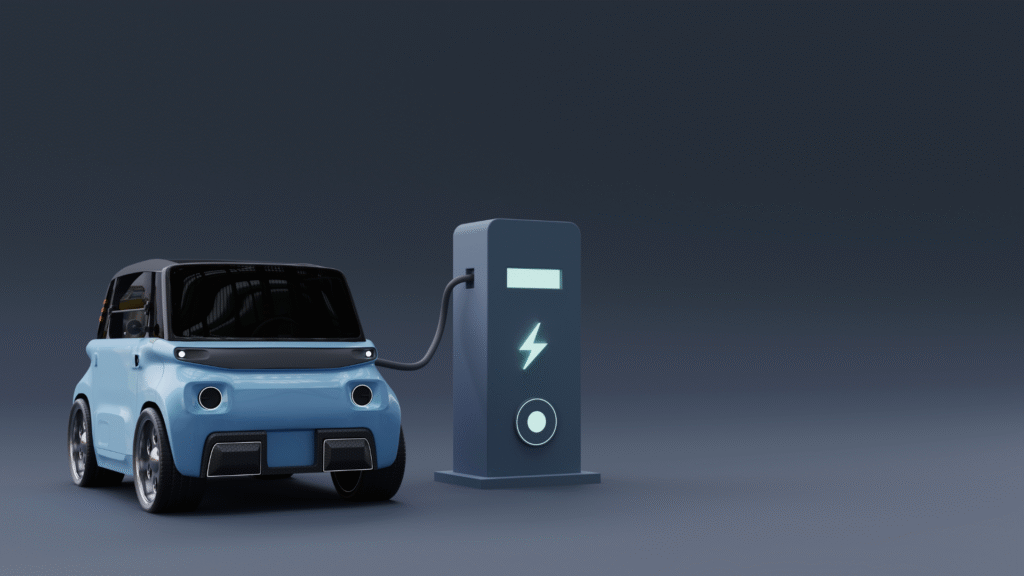The landscape of transportation is undergoing a significant transformation with the rise of electric vehicles (EVs). The future of electric cars promises efficiency, reduced emissions, and advancements in technology that will make them more accessible to the average consumer. As governments and manufacturers commit to sustainability, the infrastructure for charging and battery development is also evolving rapidly.
Innovations in battery technology are poised to enhance the performance and range of electric cars, addressing one of the main concerns for potential buyers. The shift towards renewable energy sources further bolsters the appeal of electric cars, reducing reliance on fossil fuels and contributing to cleaner urban environments. With major automotive brands intensifying their focus on electric models, the market is positioned for substantial growth.
The ongoing changes in consumer perceptions and government policies suggest that electric cars will soon become the norm rather than the exception. As more individuals recognise the benefits of switching to electric, the automotive industry is likely to see profound changes, paving the way for a sustainable transportation future.
Advancements in Electric Car Technology
The electric vehicle industry is rapidly evolving due to significant advancements in technology. In recent years, automotive engineering has played a major role in refining these systems, especially in areas like thermal management and powertrain optimization. Engineers are now developing more efficient inverters, cooling systems, and lightweight components that boost both performance and reliability. These innovations highlight how modern automotive engineering continues to push EV technology forward at a rapid pace. Key developments also focus on battery innovation, charging efficiency, and vehicle range improvements, all of which are essential for enhancing the overall user experience.
Innovations in Battery Technology
Recent progress in battery technology plays a crucial role in enhancing electric cars. Manufacturers are exploring solid-state batteries, which promise higher energy densities and improved safety compared to traditional lithium-ion batteries. These batteries reduce the risk of overheating and can potentially double the range of electric vehicles.
In addition, companies like Tesla are investing in next-generation battery chemistries, such as lithium-sulphur and lithium-iron-phosphate, which aim to lower costs and increase longevity. The development of better thermal management systems is also helping to extend battery life, making electric cars more reliable.
Faster and More Efficient Charging Times
Charging efficiency has seen remarkable improvements, reducing the time it takes to recharge electric vehicles. Ultra-fast chargers are increasingly available, allowing users to charge their cars to 80% in as little as 15 minutes. This is particularly beneficial for long-distance travel.
Technological advancements, such as improved power electronics and grid integration, are enabling faster charging solutions. Many new models now feature compatibility with both AC and DC fast chargers, enhancing versatility for users.
Improvements in Vehicle Range
Enhancements in vehicle range are essential for the widespread acceptance of electric cars. Manufacturers are now producing models that can exceed 400 miles on a single charge. This significant range reduces range anxiety and allows for longer journeys without frequent stops.
Moreover, optimised aerodynamics and lightweight materials contribute to energy efficiency. Regenerative braking systems are also being refined, allowing electric vehicles to recapture energy during braking and extend driving range. This synergy of technologies is making electric cars more practical for a wider audience.
The Rise of Autonomous Driving
The integration of autonomous driving technology into the realm of electric vehicles is becoming increasingly significant. This evolution promises enhanced safety, regulatory advancements, and a transformative effect on urban mobility.
Integration of Autonomous Cars with Electric Vehicles
The synergy between autonomous cars and electric vehicles (EVs) is a key development in the automotive industry. Major manufacturers like Tesla are at the forefront, utilising robust software systems and electric powertrains to create fully autonomous models.
By leveraging electric energy, autonomous cars can operate more efficiently, reducing emissions and reliance on fossil fuels. Integrating sophisticated sensors, these vehicles can collect real-time data to navigate and make decisions, optimising energy use in various driving conditions.
Research and development continue to improve the capabilities of these vehicles, leading to increasingly advanced features such as adaptive cruise control and lane-keeping assistance. This convergence signals a future where seamless integration becomes commonplace on roads.
Safety and Regulatory Developments
Safety is a primary concern for both consumers and regulators as autonomous driving technology advances. The adoption of autonomous vehicles must address potential risks associated with accidents and malfunctions.
Regulatory bodies are developing frameworks to ensure that these vehicles meet stringent safety standards. This includes evaluating their sensors, software algorithms, and overall performance in diverse conditions. Companies like Tesla are actively participating in discussions to shape these regulations.
Data collected from autonomous vehicles will provide valuable insights into incident patterns, contributing to improved safety measures. As regulations evolve, they will establish guidelines for testing, insurance, and liability, further facilitating the widespread acceptance of autonomous driving.
Impact on Urban Mobility
The rise of autonomous driving is poised to reshape urban mobility significantly. By reducing the number of cars on the road, urban centres can alleviate congestion and improve air quality.
Autonomous electric vehicles can optimise ride-sharing services, making transportation more efficient. As they operate with lower costs and increased convenience, individuals may opt for shared mobility options rather than private car ownership.
Furthermore, the deployment of these vehicles can lead to safer pedestrian environments. With reduced reliance on personal vehicles, cities could reallocate space for parks, cycling paths, and public transportation, enhancing the overall urban landscape.
Environmental and Societal Impacts
Electric vehicles (EVs) are poised to significantly impact environmental quality and society. Their adoption influences air pollution levels, modifies energy infrastructure, and presents both opportunities and challenges in economic spheres.
Reducing Air Pollution
Electric cars produce zero tailpipe emissions, which directly results in better air quality. Traditional petrol and diesel vehicles release pollutants such as nitrogen oxides and particulate matter, contributing to respiratory problems and environmental degradation.
A study indicated that widespread EV adoption could reduce urban air pollution by up to 50%. Cities with heavy traffic can particularly benefit, as cleaner air leads to improved public health outcomes. Lower emissions translate into reduced healthcare costs and enhance the quality of life for residents.
Shifting Energy Sources and Infrastructure
The rise of electric vehicles necessitates a transformation in energy production. More renewable energy sources, such as solar and wind, need to be integrated into the grid to power these vehicles sustainably. This shift supports energy diversification and enhances energy security.
Presently, many regions rely on fossil fuels for electricity generation. Therefore, expanding the charging infrastructure is crucial, including fast chargers and home charging points. Electric car growth can stimulate innovations and investments in smart grid technologies and energy storage solutions.
Economic Opportunities and Challenges
The transition to electric mobility introduces significant economic implications. Job creation in battery production, EV manufacturing, and charging infrastructure development presents new opportunities. According to industry forecasts, the electric vehicle sector could create millions of jobs globally by 2030.
Conversely, challenges exist. The decline of traditional automotive jobs in fossil fuel-dependent sectors may lead to economic dislocations. Governments and organisations must invest in retraining initiatives to equip workers for the evolving landscape. Balancing these opportunities and challenges will be essential for fostering a sustainable transition to electric vehicles.




